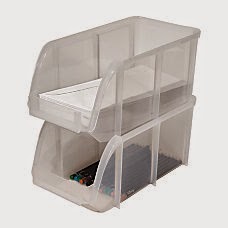 |
| https://www.facebook.com/pageawards?fref=photo |
So, how are those successes coming? Last Friday, I shared the first concept behind the STYLE acronym
: Start with Successes. Today, I’d like to talk about some strategies to help create those successes, all of which revolve around the next letter in the STYLE acronym: Take Small Steps.
 |
| clipartpanda.com |
Because getting organized and staying that way is a challenge for me, I love it when I find baby steps that contribute to the process. I've already shared one of my favorites --
Give it Five! -- which
is just what it sounds like. To
Give it Five! choose one area, and allocate five uninterrupted minutes to making progress in that space. If you get on a roll, and time permits,
Give it Five! is easily expanded into a longer chunk of time, but even if all you have is five minutes, that can be enough. Five minutes of clutter busting can provide a small success that inspires you to repeat the process in an hour, a day or a week.
Give it Five! won't get major clutter under immediate control, but it can create a small feeling of accomplishment, which makes the whole process less intimidating.
I found another one of my favorites in an
article I shared this time last month. In "10 Organizing Tips That'll Change Your Life," Cass Colin suggests this simple strategy:
put small clean-up tasks into practice. This is one of those things naturally organized people (the ones I like to call Type A Organizers) do automatically, and it's an easy one to adopt. Instead of waiting for things to pile up, take care of them one at a time, which brings me to another one of my favorites....
 |
| zazzle.com |
Don't put it down, put it away! As a recovering drop and run organizer, I sometimes have difficulty with this strategy, but when I remember to follow it, I create a lot less clutter in the first place. The pairing of this strategy with
Give it Five! can be particularly useful for many of us whose default styles make spotless surfaces simultaneously desirable and difficult.
Finally, when all else fails and I'm feeling overwhelmed by stuff, I resort to playing little games with myself. One of my favorites is "pick up one thing," a twist on
put small clean-up tasks into practice. It's simple -- each time I walk past a particular cluttered surface (usually my dining room table), I have to pick up one thing and put it where it belongs. In another version of this little mind game, which I often "play" before I sit down to watch TV or check Facebook, I assign myself a number (say, 15) and I have to pick up and put away that many things (from any location in my house) before I can move on to the fun thing that was next on my list.
While I'm sure that all of my Type A Organizer friends are shaking their heads at how complicated I'm making this, I'm equally sure that all of my overwhelmed wanna be organized friends "get" it. None of these tricks will solve major organizational issues, but they will allow us to take baby steps toward creating the organized world we want to live in. In addition, putting a dent in an overwhelming task leads to not only progress, but a sense of power over the very stuff that threatens to win the battle. And confidence is an important weapon in the clutter wars.
And that, my friends, is how we defeat clutter -- or at least call it a draw.




































